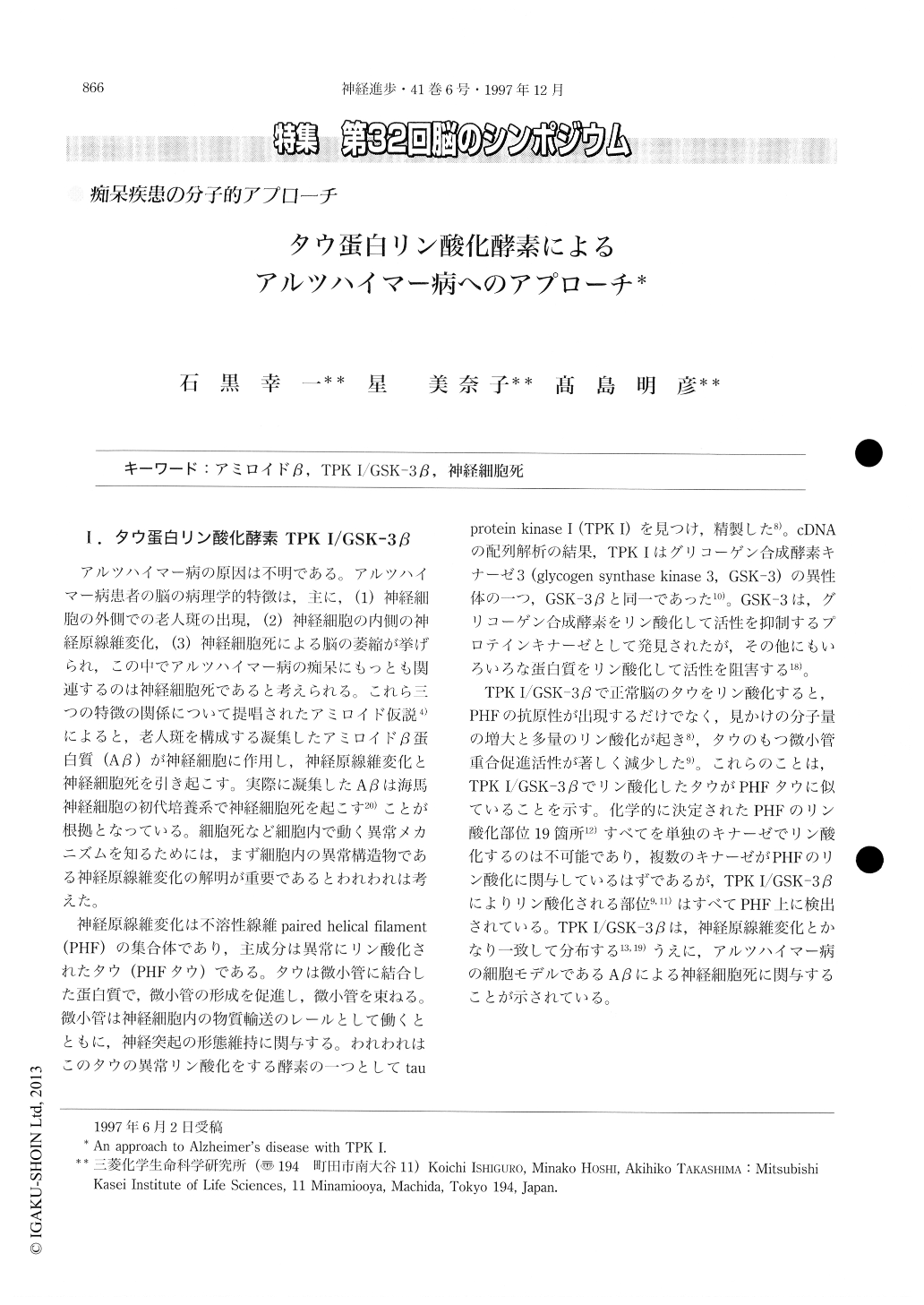Japanese
English
- 有料閲覧
- Abstract 文献概要
- 1ページ目 Look Inside
I.タウ蛋白リン酸化酵素TPK I/GSK-3β
アルツハイマー病の原因は不明である。アルツハイマー病患者の脳の病理学的特徴は,主に,(1)神経細胞の外側での老人斑の出現,(2)神経細胞の内側の神経原線維変化,(3)神経細胞死による脳の萎縮が挙げられ,この中でアルツハイマー病の痴呆にもっとも関連するのは神経細胞死であると考えられる。これら三つの特徴の関係について提唱されたアミロイド仮説4)によると,老人斑を構成する凝集したアミロイドβ蛋白質(Aβ)が神経細胞に作用し,神経原線維変化と神経細胞死を引き起こす。実際に凝集したAβは海馬神経細胞の初代培養系で神経細胞死を起こす20)ことが根拠となっている。細胞死など細胞内で動く異常メカニズムを知るためには,まず細胞内の異常構造物である神経原線維変化の解明が重要であるとわれわれは考えた。
Histopathological features of Alzheimer's disease (AD) include extracellular deposits of amyloid β (Aβ) fibril in the cores of senile plaques, intracellular neurofibrillary tangles (NFT) which are composed of paired helical filaments (PHF), and neuronal cell loss. The main component of PHF is highly phosphorylated tau protein. We identified a protein kinase converting normal tau into PHF-like state. The kinase is tau protein kinase (TPK) I/glycogen synthase kinase (GSK) -3β. Using neuronal cell culture system as AD model, it has been realized that TPK I/GSK-3β plays a central role in AD pathology.

Copyright © 1997, Igaku-Shoin Ltd. All rights reserved.


